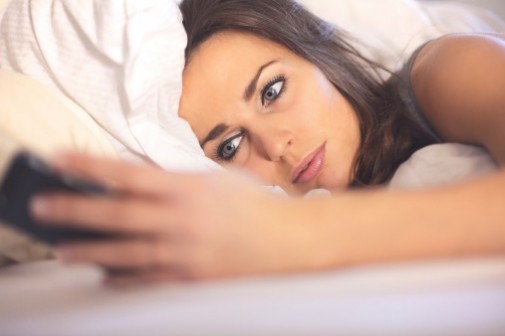Smartphone bright lights may disrupt sleep patterns

According to a 2012 Time/Qualcomm poll, almost three-quarters of people between the ages of 18 and 44 sleep with their phones within reach. Your smartphone can do a lot of things, but helping you sleep through the night, is not one of them. A recent Mayo Clinic study reveals that smartphones and tablets disrupt our sleep cycle.
Research from the study was presented at the annual meeting of the Associated Professional Sleep Societies in early June. The study found that a possible cause to the sleep disruption was LEDs (light-emitting diodes) that allow mobile devices to be viewed in dimly lit rooms. Exposure to this light can interfere with melatonin, the hormone that regulates the sleep-wake cycle.
“In the old days, people would go to bed and read a book,” said Lois Krahn, co-author of the study, in a statement. “Well, much more commonly, people go to bed and they have their tablet on which they read a book or they read a newspaper or they’re looking at material.”
Krahn, a sleep expert at Mayo Clinic in Scottsdale, Ariz., added, “There’s a lot of concern about using mobile devices, and that prompted me to wonder, ‘Are they always a negative factor for sleep?’”
As part of the study, researchers conducted tests with two tablets and a smartphone in a dark room. A meter set on its most sensitive setting measured the light the devices emitted at various settings when held away from participants’ faces at various distances.
Researchers discovered that lower brightness settings coupled with devices held a bit more than a foot from a participant’s face, reduced the risk that the light would be bright enough to suppress melatonin secretion and disrupt sleep.
“We found that only at the highest setting was the light over a conservative threshold that might affect melatonin levels. If it’s at the mid setting or at a low setting, it’s bright enough to use,” said Krahn.
The recommended distance to hold the device away from participants’ face was at least 14 inches to reduce the potential to interfere with melatonin and disturb sleep.
Related Posts
Comments
About the Author
health enews staff is a group of experienced writers from our Advocate Health Care and Aurora Health Care sites, which also includes freelance or intern writers.

















